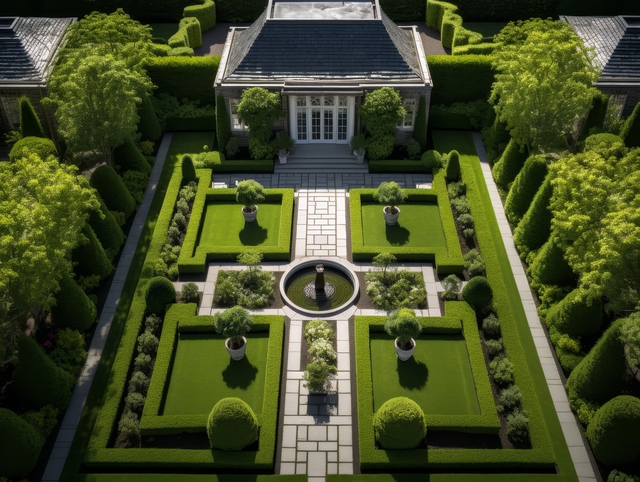
A Hamptons-style garden is a testament to serenity and elegance, a blend of relaxed coastal vibes with timeless appeal. Originating from the American coast, these gardens draw inspiration from the French and English styles, ensuring a timeless charm that transcends trends.
Australia's huge population embraces Hamptons-style gardens, especially in luxury hotels and large private residences. However, these gardens are not exclusive to large and grand spaces. You can also create a Hamptons-style garden in smaller spaces like your backyard. Before you embark on this project, you must identify the key features and elements that define a Hamptons-style garden.
This blog will discuss a Hamptons-style garden, its prominent features, how to create one, and tips for making your project successful.
What is a Hamptons-style garden?
Hamptons-style gardens are typically associated with holiday homes and hotels in the seaside communities of Long Island, New York. You know you are looking at a Hamptons-style garden when you see rich greenery, neutral colour palettes, and a wonderful mix of formal and informal planters grown in rows and shaped into hedges. They give the surroundings a rich, sophisticated look with a timeless appeal.
What are the characteristics of a Hamptons Style Garden?
• Though Hamptons-style gardens have a formal concept, they also feature areas with a cottage garden feel.
• These gardens are primarily shaped by well-manicured hedges that line either side of walkways or pathways.
• They include open lawn areas and garden beds, often with designated spaces for dining and lounging under pergolas.
• A typical Hampton garden almost always has a relaxing water feature, such as a swimming pool or a fountain.
• Moreover, garden statues and large artistic pots are common elements of a Hamptons-style landscape.
How to Create a Hampton Garden?
Now that we know the features of a Hamptons-style garden, let's learn how to create one around your home.
1). Choose Suitable Flowering Plants
A Hamptons-style garden combines lush green lawns, well-manicured hedges, and garden plants that bloom blue, white, and purple flowers. Flowering plants include Hydrangea, Gardenia, Lavender, Westringia, and Agapanthus.
2). Pick the Right Plants for Hedges
A typical hedge plant has small leaves and is often easy to maintain. Many homeowners in Australia use plants like Japanese Box (Buxus japonica) along their driveways and boundaries for their garden beds. Since the Japanese Box is a hardy plant that grows slowly, it is easier to maintain in Australian weather conditions. You could also grow plants like Mock Orange (Murraya paniculata), Viburnum (Laurustinus) or the densely packed hedge plant like Italian Cypress (Cupressus sempervirens). Most of these plants do well in partial or complete sunlight and are easy to maintain once established.
3). Plant Evergreen Trees at Strategic Points
Growing evergreen trees like Olive trees or deciduous trees like Birch or Myrtle can blend well and add height and structure to the garden. They can create a layered effect and look great at entrances or pathways. Trees positioned near seating areas can also provide shade.
4) . Choose the Best Grass for Lawns
Buffalo and Couch are favourites among Australians because they are highly drought-resistant and can survive with minimal water during the dry season. If you are after that fine and lush look and feel, you should consider one of the new Couch varieties, such as TifTuf Bermuda. It is also low-maintenance, has a soft texture compared to other grasses, and is pest—and disease-resistant. Just be aware that Cough prefers full sun all day, so if you have any shady spots, you should consider some of the Buffalo varieties such as Sir Walter Buffalo.
5). Pick Lighting that accentuates spaces.
You could choose soft, warm lights to create a cosy, welcoming ambience. Use ground lights that illuminate pathways. If you want a classic coastal look, add lantern-style post lights. If you plan to erect a statue, add a spotlight to enhance the element. You could also add subtle wall and fence lighting to define garden edges.
6). Create a Water Body
A water body completes the look of a Hampton garden. It reinforces the coastal ambience and adds a calming and luxurious touch. It also enhances reflection and light play, adding brightness to the garden. Depending on the availability of space, you could go for a swimming pool, a koi pond, or a classic stone fountain. Add white pebbles for a touch of coastal luxury around the water body.
7). Use natural-looking materials for furniture
Weathered wood, rattan, or wicker materials for furniture add a natural coastal charm to the garden. You could incorporate stone or marble tabletops for a more sophisticated look.
How do you bring all the elements of a Hamptons-style garden together?
1. Design a well-defined layout
Divide your space for seating, lawns, hedges, pathways, and a water feature. Remember to create an open layout, but zone your spaces to create border hedges.
2. Keep the colours neutral
Whites, beiges, greys, blues, purples, and all shades of leaf green are classic colours for a Hampton garden. The idea is to blend all your elements without them popping out starkly.
3. Combine hard-scaping and soft-scaping
Use stone or gravel to hardscape pathways and grow flowering plants, hedges, and grasses to add softscape to the garden.
4. Layer your plants to add depth
Grow tall trees such as Olive or Crepe Myrtle at focal points like the entrance and corner of hedges to provide a backdrop. Plant medium-height hedges like Japanese Box to create a structured and bordered look around the garden bed or your lawn, and add another layer of lower-growing hedges or shrubs to make it look more elegant. Grow flowering garden plants in clusters along the pathways bordering the hedges or strategic places like the seating areas. A layered approach will ensure your garden looks balanced and has a classic Hamptons charm.
We hope you enjoyed reading this blog. By imbibing a neutral colour scheme for timeless appeal, maintaining symmetry across the garden, and choosing the right garden plants, you will be well on your way to creating a stunning and elegant Hamptons-style garden.
If you want to source plants online in Australia, check for availability on PlantArk Australia. We are an Australian plant marketplace where you can sell and buy plants and seeds.


